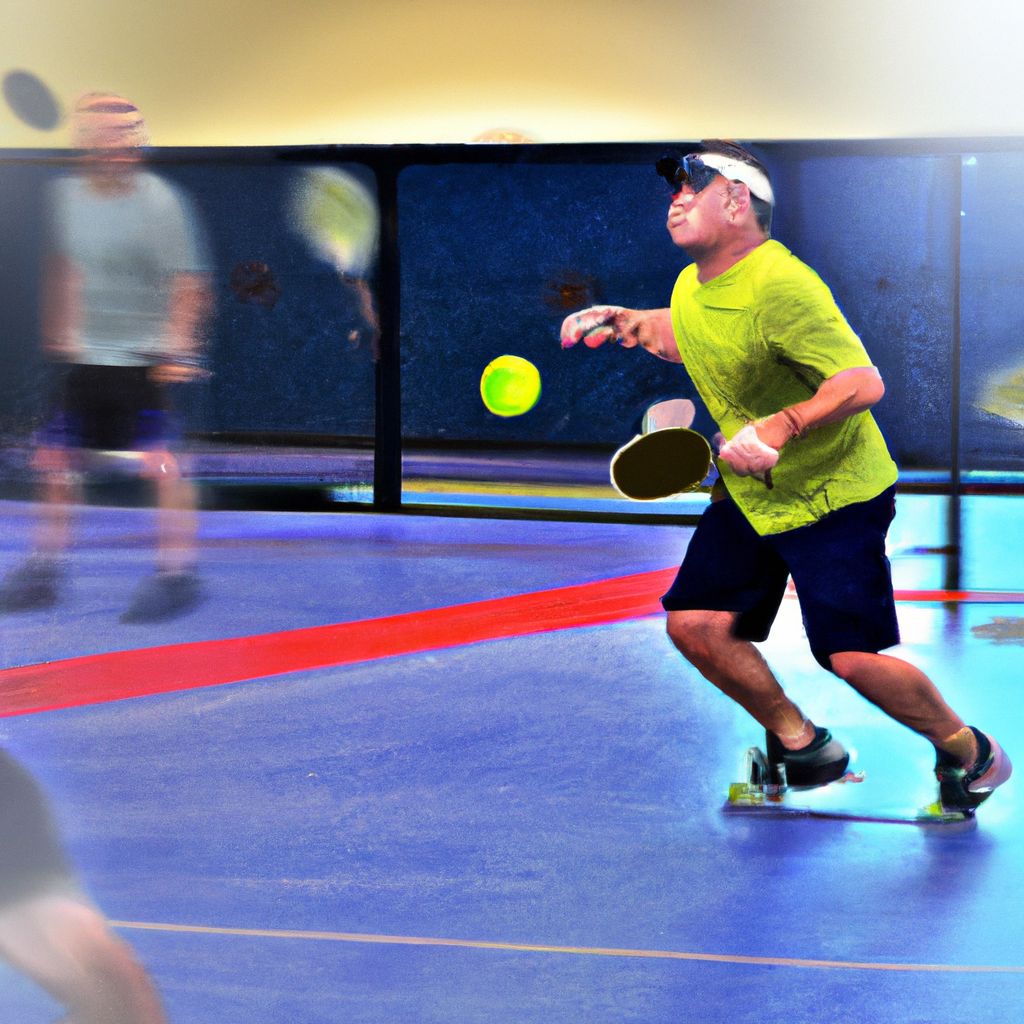

Pickleball, a popular sport that combines elements of tennis, badminton, and table tennis, is enjoyed by people of all ages and skill levels. If you’re new to the sport or looking to improve your skills, this comprehensive guide will introduce you to the world of pickleball.
Firstly, let’s understand what pickleball is. It is a paddle sport that uses a solid paddle, similar to a large ping pong paddle, and a perforated plastic ball. Pickleball can be played in singles or doubles on a court that is about a third of the size of a tennis court.
To delve into the history of pickleball, it was invented in 1965 on Bainbridge Island, Washington by three families who were looking to create a new game that would keep their children active during the summer. Since then, pickleball has gained immense popularity worldwide and is now played in schools, community centers, and tournaments.
In order to play pickleball, it’s essential to familiarize yourself with the rules of the game. This includes understanding the scoring system, gameplay strategies, and the equipment required. Having a good grip and stance, as well as mastering serving techniques, are also crucial aspects of the game. learning the basics of pickleball shots and implementing effective strategies and tactics will help you become a formidable player.
To improve your skills, there are specific training exercises and drills that can be incorporated into your practice routine. Mental preparation and focus are equally important, as they contribute to your overall performance on the court. Furthermore, observing proper pickleball etiquette and displaying good sportsmanship are essential components of the game.
Lastly, this guide will provide you with tips and tricks for pickleball, as well as highlight common mistakes to avoid. By following the advice and techniques outlined in this article, you will be well on your way to honing your pickleball skills and enjoying this exciting sport to the fullest.
Key takeaway:
- Pickleball maximizes social interaction: Pickleball is a fun and social sport that can be played with friends and family, allowing for bonding and enjoyment.
- Pickleball is suitable for all ages and skill levels: Whether you’re a beginner or an experienced player, pickleball can be enjoyed by people of all ages and skill levels, making it an inclusive sport.
- Pickleball provides a full-body workout: Playing pickleball involves constant movement and requires agility, balance, and coordination, providing a great cardio and muscle-strengthening workout.
What is Pickleball?
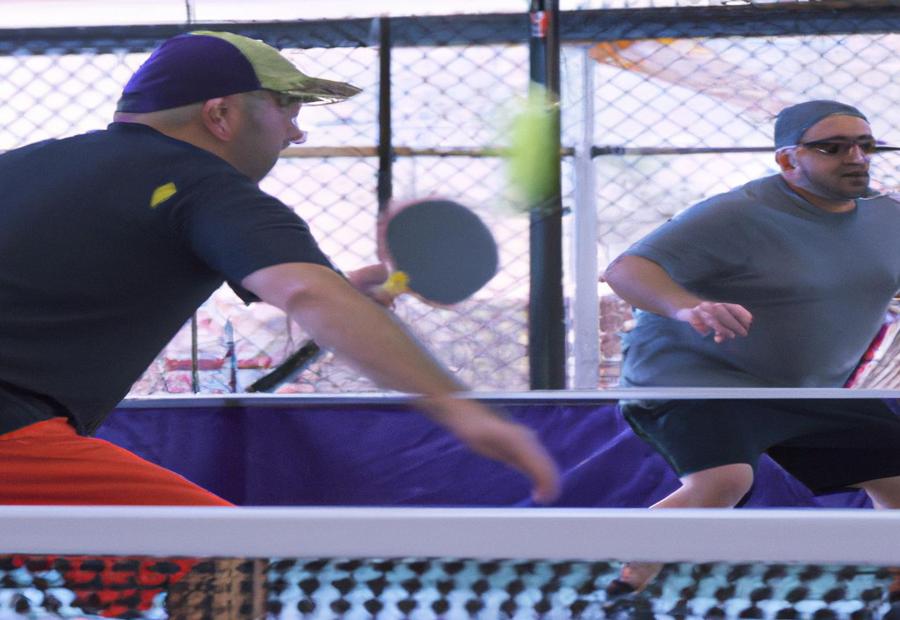

Photo Credits: Tothepickleball.Com by Walter Baker
Picture yourself in a lively sports court, holding a paddle and immersed in a thrilling game. This is the essence of pickleball, a dynamic sport that has been gaining immense popularity. In this section, we’ll uncover the roots of pickleball by exploring its fascinating history. From its humble beginnings to its evolution into a worldwide phenomenon, the history of pickleball sheds light on the foundations of this captivating sport. Get ready to embark on a journey through time and witness the birth and growth of pickleball from its very origins.
The Rules of Pickleball
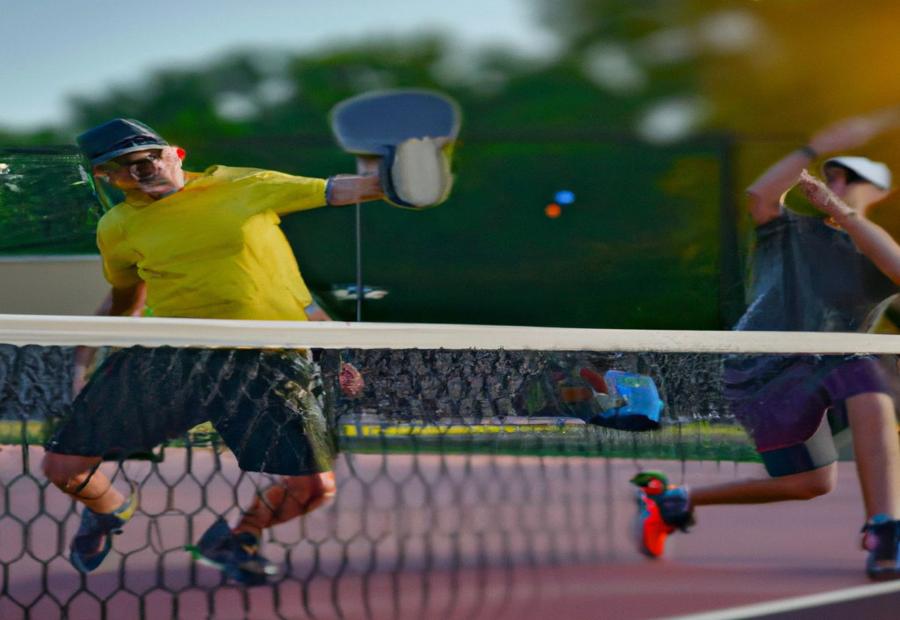

Photo Credits: Tothepickleball.Com by Timothy Taylor
Get ready to dive into the exciting world of Pickleball! In this section, we’ll uncover the essential rules that govern this fast-paced and addictive sport. From the ins and outs of scoring and gameplay to the crucial equipment and court requirements, we’ve got you covered. So, whether you’re a seasoned pro looking to brush up on the details or a newbie eager to learn the ropes, get ready to ace the rules of Pickleball and take your game to the next level!
Scoring and Gameplay
Scoring and gameplay in pickleball are crucial elements to understand in order to fully enjoy and participate in the game. Below is a table that explains the scoring system and some key gameplay rules:
| Scoring | Gameplay |
|---|---|
| A pickleball game is typically played until one team reaches 11 points, and they must win by a margin of 2 points. | Each team consists of two players. The server starts the game by standing behind the baseline and hitting the ball diagonally to the opponent’s service area. |
| Points are only scored by the serving team. If the serving team wins the rally, they score a point. If the receiving team wins the rally, they become the new serving team but do not score a point. | After the serve, the ball must be returned before it bounces twice on the receiving side. Players can volley the ball (hit it in the air) as long as they are not in the non-volley zone near the net. |
| In doubles play, the server always starts on the right side and alternates sides until a fault is committed. | The ball must stay within the boundaries of the court; hitting it out of bounds results in a point for the opposing team. |
| If the game reaches a score of 10-10, a unique scoring rule called “Win by 2” is implemented. Teams will continue playing until one team has an advantage of 2 points. | Players cannot hit the ball twice in a row and cannot hit the ball before it has crossed the centerline. Doing so results in a fault. |
Understanding the scoring and gameplay rules of pickleball is essential for a fair and enjoyable game. It ensures that each team has an equal chance to score points and showcases the skill and strategy involved in the game. So, grab your paddle, get on the court, and enjoy the exciting world of pickleball!
Equipment and Court
When it comes to playing pickleball, having the right equipment and court is essential for a smooth and enjoyable game. Here is a breakdown of the equipment and court requirements:
| Equipment | Court |
|---|---|
| Pickleball Paddle | |
| The paddle is usually made of lightweight materials such as graphite or composite. It has a solid surface with small holes and a grip handle for better control. | |
| Pickleball Ball | |
| The ball resembles a wiffle ball with holes. It is made of durable plastic and comes in different colors, usually yellow or white. The ball should be approved for tournament play. | |
| Net | |
| The net is placed in the middle of the court and should have a height of 34 inches at the sidelines and 36 inches at the center. The net should be sturdy and correctly tensioned. | |
| Court Surface | |
| The court can be indoor or outdoor. For outdoor play, a hard surface such as concrete or asphalt is preferred. Indoor courts can be made of wood or synthetic materials. The court should have clear boundary lines and a non-slip surface. |
Now that you have a clear understanding of the equipment and court requirements, here’s a fun fact: Did you know that pickleball was invented in 1965 by Joel Pritchard, Bill Bell, and Barney McCallum? They created the game to entertain their families during summertime. Little did they know that it would grow into a popular sport enjoyed by millions around the world.
How to Play Pickleball
Mastering the game of pickleball is all about finding the perfect balance between grip, stance, serving techniques, shot execution, and strategic decision-making. In this section, we’ll dive into the nitty-gritty details that can take your pickleball game to the next level. From perfecting your grip and stance to learning various serving techniques, we’ll explore the essential components that make up a successful pickleball player. Get ready to unlock the secrets behind this exciting and fast-paced sport that is taking the world by storm.
Grip and Stance
When it comes to playing pickleball, having the right grip and stance is crucial for a successful game. Here are some key points to consider:
- Grip: The grip is the foundation of your pickleball game. You should hold the paddle with a firm grip, but not too tight. This allows for better control and maneuverability during gameplay.
- Stance: Your stance plays a significant role in your ability to move quickly and efficiently on the pickleball court. It’s important to have a balanced and athletic stance with your knees slightly bent and your weight evenly distributed between your feet.
- Hand Position: To achieve a good grip, place your dominant hand comfortably on the paddle’s handle, keeping your fingers relaxed. Your non-dominant hand should rest lightly on the paddle face, offering support and stability.
- Square to the Net: Position your body in a way that you are facing the net squarely. This allows you to have better control over your shots and increases your chances of hitting the ball accurately.
- Low Paddle: Keep your paddle low to the ground, especially during volleys. This enables you to react quickly and make solid contact with the ball.
- Ready Position: Always be ready for the next shot by staying in a ready position. This means staying light on your feet and being prepared to move in any direction.
- Maintain Balance: It is essential to maintain your balance throughout the game. Avoid leaning too much in one direction, as it can lead to loss of control and stability.
- Adjust for Different Shots: Depending on the shot you are making, you may need to adjust your grip and stance slightly. For example, a forehand shot will require a different grip and stance than a backhand shot.
- Practice: Like any skill, improving your grip and stance takes practice. Take the time to work on your technique and make adjustments as needed to find what works best for you.
Remember, your grip and stance are fundamental elements of your pickleball game. By mastering these aspects, you will be well on your way to becoming a more proficient player. So get out there, have fun, and keep refining your grip and stance skills to take your pickleball game to the next level.
Serving Techniques
When it comes to serving techniques in pickleball, incorporating various strategies can greatly enhance your game. Here are some key serving techniques to keep in mind:
- Placement: Strategically aim to place your serve in challenging areas, such as corners or sidelines, making it difficult for your opponent to return. This pressure can give you an advantage in the point.
- Speed: Utilize varying speeds in your serve to throw off your opponent’s anticipation. Mixing up fast and slow serves creates confusion and presents opportunities for winning shots.
- Spin: Incorporating spin into your serve can be highly effective in pickleball. Incorporating topspin can result in an aggressive bounce, forcing your opponent into a defensive position. On the other hand, backspin can produce a lower bounce, making it challenging for your opponent to return with power.
- Depth: Considering the depth of your serve can help you gain an advantage. A deep serve forces your opponent away from the net, creating a longer distance for them to cover. This provides you with more time to prepare for the next shot.
- Variety: To keep your opponent guessing, it is crucial to incorporate a variety of serving techniques. Alternating between different placements, speeds, spins, and depths makes it challenging for your opponent to anticipate your next move, opening up more opportunities for winning points.
Regularly practicing these serving techniques is key to improving your skills. By mastering these techniques, you can increase your chances of winning points and gain an advantage over your opponents in pickleball.
Basics of Pickleball Shots
To improve your game in pickleball, it is important to understand the basics of pickleball shots. You can learn these shots by following a few simple steps:
- Forehand Shot: Begin by positioning your body sideways to the net, with your non-dominant foot forward. Hold the paddle with both hands and swing it forward, making contact with the ball on the side of your body.
- Backhand Shot: Similar to the forehand shot, position your body sideways and grip the paddle with both hands. Swing the paddle across your body to hit the ball on the backhand side.
- Serve: Stand behind the baseline and face the net. Toss the ball into the air and strike it diagonally into the opposite service box. Keep in mind to keep the ball below your waist and use an underhand motion.
- Volley: When the ball is in the air, you have the option to hit it before it bounces. Use a short and controlled swing to return the ball over the net. Ensure that your body remains stable and maintain good positioning.
- Drop Shot: To execute a drop shot, lightly tap the ball over the net, aiming to make it land close to the net on your opponent’s side. This shot requires finesse and touch to catch your opponent off guard.
- Smash: When the ball is high in the air, you can use a smash shot to aggressively put it away. Raise the paddle above your head and swing it forcefully downward, aiming to hit the ball with power and precision.
Mastering the basics of pickleball shots is crucial for enhancing your gameplay. Dedicate time to practicing these shots and experiment with different techniques to discover what works best for you. Always stay focused, maintain proper form, and be prepared to adapt to various gameplay situations.
In the mid-1960s, pickleball was invented on Bainbridge Island, Washington, by Joel Pritchard, Bill Bell, and Barney McCallum. The trio created the game as a recreational activity to entertain their families during a summer gathering. By combining elements from tennis, badminton, and ping pong, they developed a unique sport that rapidly gained popularity. The name “pickleball” was inspired by Pickles, the Pritchard family dog, who would chase after the ball and run off with it.
Strategies and Tactics
When it comes to playing pickleball, having effective strategies and tactics can greatly improve your game. Here are some strategies and tactics to consider:
- Utilize strategic maneuvering: One pivotal strategy in pickleball is to adeptly position yourself close to the net. This advantageous spot allows you to maintain game control and exert pressure on your opponents. It also limits the angles available for them to execute shots.
- Establish effective communication with your partner: Communication plays a vital role in pickleball doubles. Coordinate with your partner to efficiently cover the court, convey your shot selections, and devise game plans during matches.
- Incorporate a diverse range of shots: Incorporating a variety of shots can keep your opponents off balance and make it more difficult for them to predict your next move. Utilize dinks, lobs, drives, and drop shots to diversify your game and keep your opponents uncertain.
- Exploit weaknesses: Observe your opponents and identify their vulnerabilities. Direct your shots towards their weaker side or maneuver them into uncomfortable positions.
- Cultivate patience: Patience is a fundamental virtue in pickleball. Avoid hasty shots or premature attempts to win points. Instead, wait for opportune moments to attack or exert pressure on your opponents.
- Safeguard the middle of the court: When participating in doubles, it is essential to defend the center of the court to obstruct your opponents from hitting shots between you and your partner. Remain vigilant regarding court positioning and adjust accordingly.
- Adapt to your opponents: Pay close attention to your opponents’ playing style and adapt your tactics accordingly. If they favor dinking, be prepared for longer rallies. If they adopt a more aggressive approach, be ready to counter their shots.
- Maintain focus and mental resilience: Mental toughness is pivotal in pickleball. Remain focused, positive, and composed, especially during challenging situations. Sustain a confident mindset throughout the game.
By implementing these strategies and tactics, you can augment your pickleball skills and enhance your likelihood of triumphing in matches. Remember to regularly practice them and adapt them to various opponents and situations. Continuously refine your game and relish the exhilaration of playing pickleball!
Pickleball Tips and Tricks
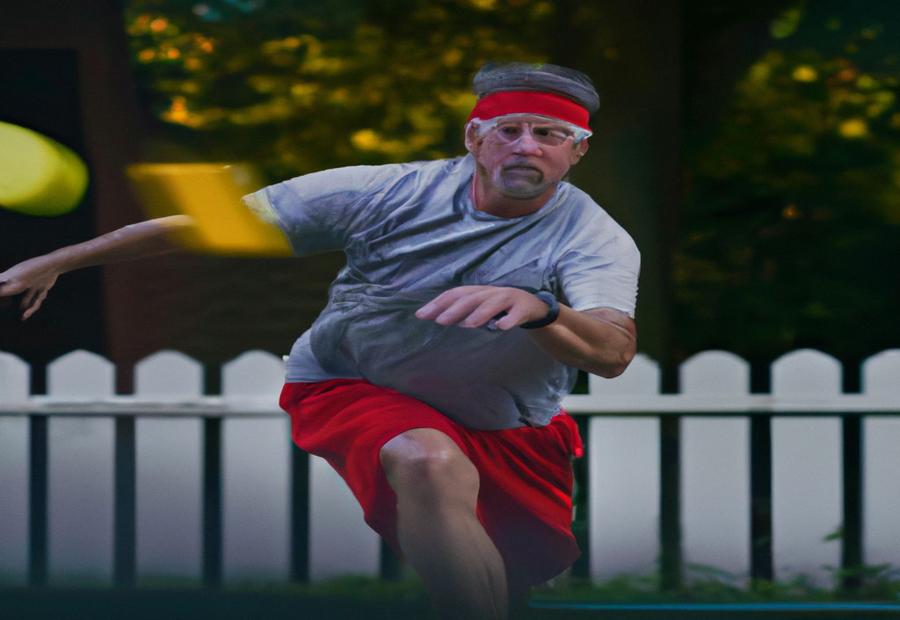

Photo Credits: Tothepickleball.Com by Logan Taylor
When it comes to playing pickleball, incorporating pickleball tips and tricks can naturally enhance your game. Whether you’re a beginner or a seasoned player, these strategies can help you improve your skills and enjoy the game even more. Here are some pickleball tips and tricks to keep in mind:
1. Improve your serve: The serve is a crucial part of pickleball, and incorporating pickleball tips and tricks for serving can give you an advantage right from the start. Practice different types of serves, such as the drive serve or the lob serve, to keep your opponents guessing.
2. Master your dinks: Dinking is an essential skill in pickleball, as it allows you to control the pace of the game and set up your shots. Incorporate pickleball tips and tricks for dinking by working on your soft shots near the net to keep the ball low and force your opponents into making mistakes.
3. Communicate with your partner: In doubles pickleball, communication with your partner is key. Incorporate pickleball tips and tricks for effective communication by coordinating your movements, calling out shots, and strategizing together to maximize your chances of winning.
4. Practice your footwork: Good footwork is crucial for getting in the right position to hit the ball. Incorporate pickleball tips and tricks for footwork by working on your agility and quickness on the court, moving smoothly and efficiently to reach every shot.
5. Keep your eye on the ball: This may seem like an obvious tip, but it’s essential to keep your eyes on the ball at all times. By focusing on the ball, you can anticipate its trajectory and react faster, incorporating pickleball tips and tricks for better focus.
6. Mix up your shots: Don’t be predictable in your shot selection. Vary your shots by incorporating lobs, drives, and drops to keep your opponents off-balance and guessing your next move, using pickleball tips and tricks for shot variation.
7. Stay patient: Patience is a virtue in pickleball. Avoid going for risky shots or trying to hit winners all the time. Instead, focus on consistent play, waiting for the right opportunity to take control of the point, incorporating pickleball tips and tricks for patience and strategic play.
8. Play smart: Pickleball is not just about power, but also about strategy. Analyze your opponents’ weaknesses and exploit them, using pickleball tips and tricks for smart play. Target areas where they struggle, and adapt your game plan accordingly.
Remember, the key to becoming a better pickleball player is practice and dedication. Use these pickleball tips and tricks during your training sessions and matches to improve your skills and elevate your game. Keep honing your skills, and soon you’ll see progress on the court.
Common Mistakes to Avoid in Pickleball
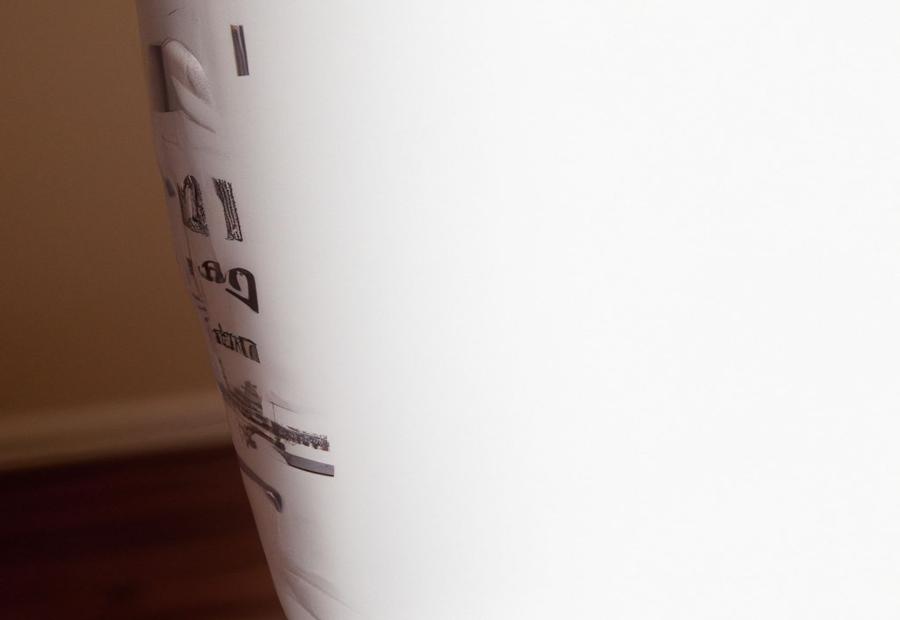

Photo Credits: Tothepickleball.Com by Logan Hill
When playing pickleball, it’s essential to be aware of common mistakes that can hinder your performance. By avoiding these common mistakes to avoid in pickleball, you can elevate your game and have a more enjoyable experience on the court. Here is a list of common mistakes to avoid in pickleball:
- Standing too far back: One common mistake to avoid in pickleball is standing too far back from the kitchen line. This can make it difficult to react quickly and reach the ball. It’s important to stay close to the net to be ready for volleys and quick reactions.
- Not using proper grip: Using the wrong grip can affect your control and power in shots. Make sure to use the proper paddle grip, with your fingers comfortably wrapped around the handle. This will provide better control and accuracy in your shots.
- Failure to communicate: Pickleball is a game that requires communication with your partner. Not communicating effectively can lead to confusion and missed opportunities. Use clear signals and verbal cues to let your partner know your intentions and coordinate your movements on the court.
- Over-hitting the ball: Many players make the mistake of hitting the ball too hard in an attempt to gain power. However, over-hitting can lead to errors and balls going out of bounds. Focus on control and placement rather than sheer power.
- Ignoring the sidelines: It’s crucial to be aware of the boundaries of the court. Ignoring the sidelines can result in shots going out of bounds and giving points to the opposing team. Stay focused and make sure your shots are within the lines.
- Not adjusting to the opponent: Each opponent has their own style and strengths. Failing to adjust your strategy and shots accordingly can put you at a disadvantage. Take the time to observe your opponent’s weaknesses and adjust your game plan accordingly.
- Lack of patience: Pickleball is a game that requires patience and strategy. Rushing shots or trying to force a win can lead to mistakes and unforced errors. Take your time, be patient, and wait for the right opportunity to attack.
- Not practicing footwork: Good footwork is essential in pickleball. Not practicing footwork can lead to being off balance and unable to reach shots. Regularly practice your footwork drills to improve your agility and ability to quickly move around the court.
- Being overly predictable: A common mistake is becoming too predictable in your shots and strategies. Vary your shots, use different angles, and mix up your game to keep your opponents guessing and off guard.
- Failure to adapt to different conditions: Pickleball can be played indoors or outdoors, and court conditions can vary. Failing to adapt to different conditions, such as wind or different surfaces, can affect your game. Be flexible and adjust your shots and strategies accordingly.
By avoiding these common mistakes to avoid in pickleball, you can elevate your game and become a more skilled and competitive player.
How to Improve Your Pickleball Skills
Looking to enhance your pickleball skills? In this section, we’ll explore effective methods to improve your game. Discover a range of training exercises and drills that will take your pickleball prowess to new heights. Additionally, we’ll delve into the world of mental preparation and focus, as we uncover strategies to strengthen your mental game on the court. Get ready to level up your pickleball skills and dominate the game like never before.
Training Exercises and Drills
When it comes to improving your pickleball skills, incorporating training exercises and drills into your practice sessions can be highly beneficial. These exercises and drills help enhance your coordination, agility, speed, and strategy on the court. Here are some effective ways to incorporate training exercises and drills to improve your pickleball proficiency:
- Footwork drills: One of the most important aspects of pickleball is having quick and precise footwork. To improve your footwork, set up cones or markers on the court and practice moving around them in different patterns. Focus on your ability to change direction, accelerate, and decelerate efficiently.
- Volley drills: Set up a practice partner or a ball machine and work on volleys from different positions on the court. This will help you improve your timing, technique, and control while maintaining a consistent rhythm.
- Dinking drills: Dinking is a crucial aspect of pickleball, so it’s essential to dedicate time to practicing this skill. Set up a mini-game where you and your partner play only dinks, focusing on soft touches and placement rather than power.
- Serve and return drills: Work on your serves by targeting specific areas of the court. Practice different types of serves, such as the drive serve or the lob serve, to develop variety in your game. Additionally, practice returning serves from various positions and angles to improve your reactions and accuracy.
- Third shot drop drills: The third shot drop is an important shot in pickleball. Practice hitting accurate, soft shots that land close to the net. Focus on controlling the speed and height of the ball to make it difficult for your opponents to make aggressive returns.
- Gameplay simulations: To simulate real game scenarios, set up practice matches or play against strong opponents. This will help improve your decision-making, adaptability, and overall strategy. Analyze your strengths and weaknesses during these simulations to identify areas for improvement.
By incorporating these training exercises and drills into your practice routine, you can cultivate your pickleball proficiency and boost your overall performance on the court. Remember to maintain a consistent practice schedule, challenge yourself, and seek feedback from experienced players to continuously enhance your skills.
Mental Preparation and Focus
Mental preparation and focus are crucial aspects of playing pickleball. A player’s mindset can greatly impact their performance on the court. Here are some key factors to consider for mental preparation and focus:
- Positive mindset: Maintaining a positive attitude is essential for success in pickleball. Always believe in your abilities and focus on the present moment instead of dwelling on past mistakes or worrying about future outcomes. A positive mindset can boost confidence and enhance performance.
- Visualization: Before stepping onto the court, visualize yourself executing shots correctly and playing at your best. This mental imagery helps cultivate muscle memory and prepares your mind for the game ahead. Visualizing success can increase confidence and improve focus.
- Goal setting: Set specific and achievable goals for each match or practice session. Goals can be related to improving specific skills, winning a certain number of points, or executing a particular strategy. Having clear objectives helps maintain focus and drive during play.
- Concentration: Concentration is crucial for pickleball success. Stay fully present and focused on the game at hand. Avoid distractions and eliminate negative thoughts. Concentrate on each shot, anticipating the ball’s movement, and reacting quickly. Maintaining focus ensures better decision-making and execution.
- Stress management: Develop techniques to manage stress and pressure during matches. Deep breathing exercises, mindfulness, and staying composed under challenging situations can help alleviate stress and enhance mental clarity. A calm and focused mind leads to better decision-making on the court.
- Adaptability: Be mentally flexible and adaptable to different game situations. Recognize that the game can change quickly, and it’s essential to adjust your strategy accordingly. Stay mentally prepared for unexpected challenges and be willing to make quick decisions to adapt to different playing styles.
- Resilience: Develop mental resilience to bounce back from mistakes or setbacks. Every point is an opportunity to improve, so learn from any errors instead of dwelling on them. Stay motivated and maintain a determined mindset, even in the face of adversity.
- Preparation: Mental preparation starts before stepping onto the court. Develop pre-game rituals or routines that help you get into a focused mindset. This could include listening to music, performing warm-up exercises, or engaging in visualization techniques.
By incorporating these mental preparation and focus techniques into your pickleball routine, you can improve your performance and increase your chances of success on the court.
Pickleball Etiquette and Sportsmanship
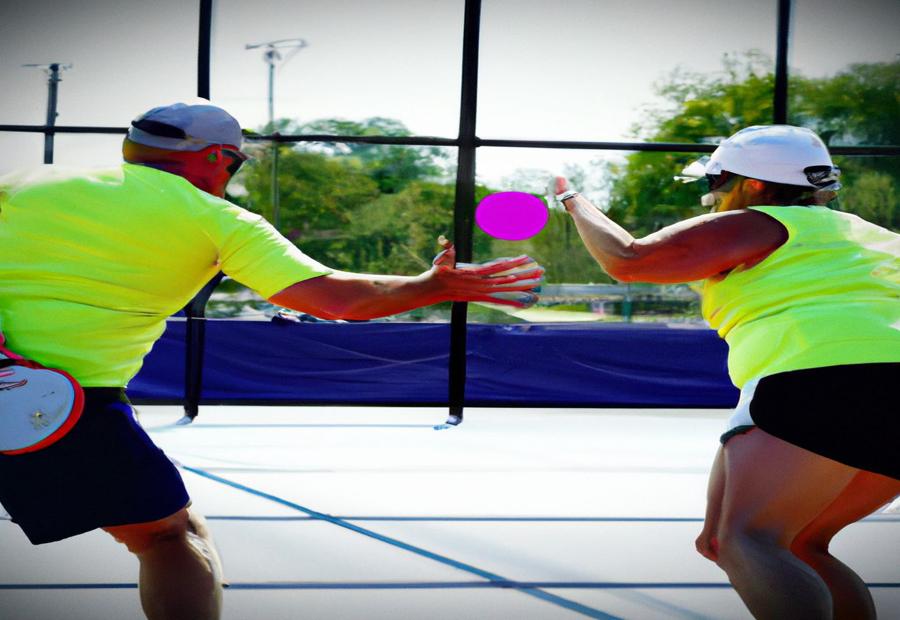

Photo Credits: Tothepickleball.Com by Benjamin Garcia
When playing pickleball, it is essential to practice proper pickleball etiquette and display good sportsmanship. This will ensure that everyone involved has a positive and enjoyable experience. Here are some guidelines to follow:
-
Respect your opponents and teammates by treating them with courtesy and fairness, regardless of their skill level or the level of competition. Make sure to acknowledge good shots and congratulate the opposing team on their successes.
-
Follow the official rules of the game. Take the time to familiarize yourself with the pickleball rules and play by them. This includes understanding the scoring system, knowing the court boundaries, and following the correct serving and returning protocols.
-
Avoid excessive noise and distractions during gameplay. Keep conversations and noise to a minimum to prevent distractions for both players and spectators. It is best to save celebrations for significant moments and maintain a respectful atmosphere.
-
Be mindful of time by being punctual and arriving on time for games and matches. Try to avoid unnecessary delays and keep the game moving smoothly. Respect the designated time limits for warm-ups and breaks.
-
Maintain good court etiquette by being aware of your surroundings and not stepping onto adjacent courts during play. Promptly retrieve stray balls and return them to the appropriate players. Avoid crossing behind other players during rallies.
-
Communicate effectively by using hand signals or verbal cues to coordinate with your partner and avoid collisions or confusion on the court. Keep your communication clear and focused.
-
Stay positive and control your emotions. It is natural to feel frustration or disappointment during a game, but it is important to remain composed and avoid outbursts or arguments. Focus on self-improvement and learn from any mistakes.
-
Practice good hygiene as pickleball is a physically demanding sport. Make sure to stay clean, wear suitable sports attire, and bring a towel or sweatband to manage sweat.
By adhering to these guidelines, you can contribute to a positive pickleball experience for yourself and others. Remember that pickleball is not just about winning; it is also about enjoying the game and building connections with fellow players. With good pickleball etiquette and sportsmanship, you can create a welcoming and inclusive environment for all participants.
Some Facts About How To Play Pickleball:
- ✅ Pickleball is the fastest growing sport in America with 4.8 million players in 2021. (Source: Phila YMCA)
- ✅ Pickleball was invented in 1965 by Barney McCallum, Joel Pritchard, and Bill Bell. (Source: Phila YMCA)
- ✅ The game combines elements of ping-pong, badminton, and tennis. (Source: Phila YMCA)
- ✅ Pickleball is played on a court that is 20 feet by 44 feet with a net height of 34 inches at the center and 36 inches at the end-posts. (Source: Phila YMCA)
- ✅ Beginners are advised to stretch before playing, focus on the ball, maintain breathing, aim for long rallies, and have fun. (Source: Phila YMCA)
Frequently Asked Questions
How do I play pickleball?
Pickleball is played on a badminton-sized court with a net, and it combines elements of ping-pong, badminton, and tennis. The game starts with a serve, which must be hit underhand and below the waist. The serve must clear the “Kitchen” area, which is a 7 ft zone on each side of the net where no volleys are allowed. The game continues until a fault is committed, which can be a serve that doesn’t clear the kitchen, a shot hit out of bounds, or a shot hit into the net. Players cannot volley in the kitchen, but they can hit groundstrokes from there. Points can only be won on your serve, and you must win by two points. In doubles, both players on a team get the opportunity to serve, and the score is called out as your team’s score, your opponent’s score, and the serve position. In singles, the serve is always taken from the right side of the court when the server has an even number of points, and from the left side when the server has an odd number of points.
What equipment do I need to play pickleball?
To play pickleball, you will need a pickleball paddle, a pickleball court, friends to play with, a pickleball, and comfortable clothes and shoes. The paddle is used to hit the ball, and the court is the playing area. Pickleball balls are specifically designed for the sport. Comfortable clothes and shoes are important to ensure ease of movement and reduce the risk of injuries.
Where can I learn how to play pickleball?
There are various resources available to learn how to play pickleball. Online platforms, such as USA Pickleball and Pickler, offer instructional videos, tips, and strategies for players of all skill levels. Bob McIntyre, a knowledgeable pickleball instructor, also offers coaching and classes for beginners. Additionally, Greater Philadelphia YMCA facilities provide pickleball courts and amenities for practice and learning.
How can I improve my pickleball skills?
To improve your pickleball skills, it is important to practice regularly and focus on the fundamentals of the game. Watching instructional videos and receiving clear instructions from knowledgeable instructors, such as Bob McIntyre, can also help you develop your skills. Implementing effective serving strategies, improving your backhand, and upping your dinking strategy can also enhance your gameplay. Continuously learning and seeking new techniques will help you play better pickleball.
What are the basic rules of pickleball?
The basic rules of pickleball include serving diagonally to the partner in the right or left service area, ensuring the serve clears the kitchen and non-volley line, and allowing the ball to bounce once on each side before volleying. Faults occur if the serve is above waist-level, doesn’t clear the kitchen, lands outside the sideline or behind the baseline, or lands in the net. The kitchen, a restricted area, only allows volleys for returning short shots. In doubles play, both partners get to serve, and the score is announced with three numbers. The serving team scores points, and the first team to reach 11 points, with a two-point lead, wins the game.
How can I stay safe while playing pickleball?
Health and safety are important aspects of pickleball. It is recommended to stretch before playing to prevent injuries. Following guidelines provided by organizations like USA Pickleball and Pickler can help you stay healthy and avoid injuries on the court. Additionally, wearing comfortable shoes and maintaining a positive attitude and good sportsmanship can contribute to a safe and enjoyable pickleball experience.






